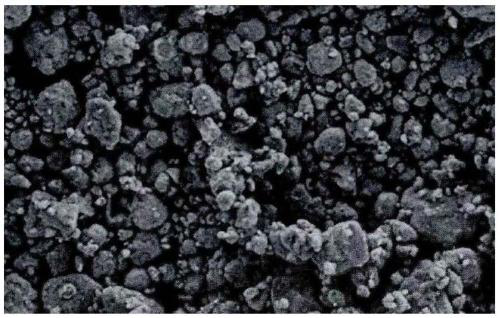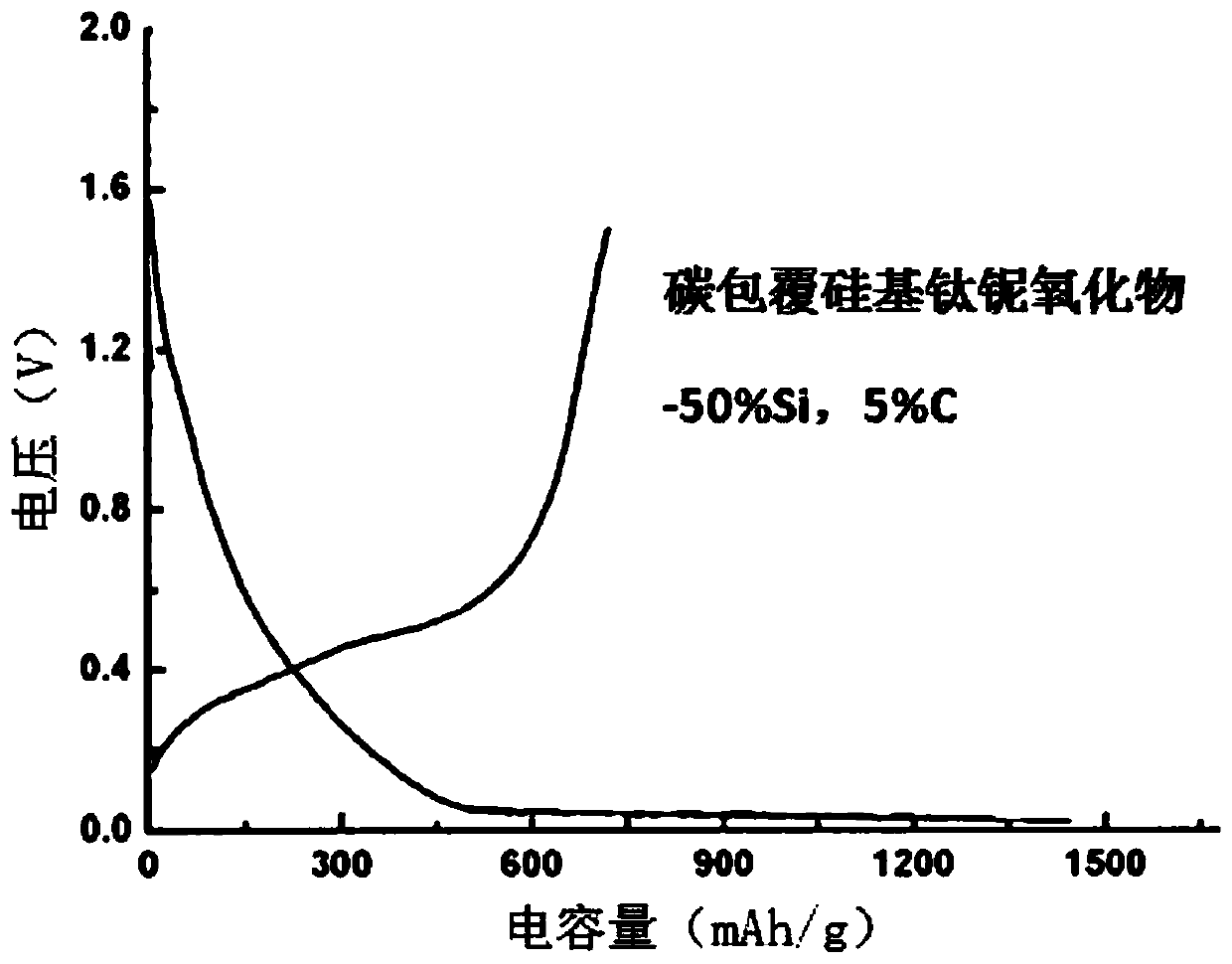Carbon-coated silicon-based titanium-niobium composite material and preparation method thereof and lithium ion battery
A composite material and carbon coating technology, applied in the preparation/purification of carbon, niobium compounds, secondary batteries, etc., can solve problems such as poor stability, and achieve the effect of improving electrical contact, small volume effect, and high cycle performance
- Summary
- Abstract
- Description
- Claims
- Application Information
AI Technical Summary
Problems solved by technology
Method used
Image
Examples
preparation example Construction
[0024] As described in the background art, the problem of poor stability of silicon materials in the charging and discharging process in existing lithium-ion batteries. In order to solve the above technical problems, the present application provides a method for preparing a carbon-coated silicon-based titanium-niobium composite material, the preparation method comprising: using titanium source and niobium source as raw materials to perform the first calcination process to obtain the first calcined product, The temperature of the first calcination process is 800-1200°C; the silicon source, the first calcination product and the carbon source are subjected to the second calcination process to obtain a carbon-coated silicon-based titanium-niobium composite material, and the temperature of the second calcination process is 500-1000 °C ℃; wherein, the titanium source is selected from one or more of anatase titanium dioxide, anatase titanium dioxide hydrate silicon powder and silicon ...
Embodiment 1
[0044] A method for preparing a carbon-coated silicon-based titanium-niobium composite material comprises:
[0045] Weigh deionized water, 400gNb 2 o 5 (1.50mol) and 139.57gTiO 2 2H 2 O (1.20mol) is mixed and prepared into a slurry with a solid content of 13%; the slurry is subjected to the first wet grinding to obtain the first slurry, wherein the grinding power is 10kwh / kg, and the particle size D50≤0.2μm; The first slurry is subjected to the first spray drying, the inlet temperature of the spray drying device used is 220°C, and the outlet temperature is 100°C.
[0046] The spray-dried material is subjected to a first calcination process in air, wherein the temperature of the first calcination process is 1100° C., and the sintering time is 6 hours. The product of the first calcining process is screened with a 200-mesh screen to obtain the first calcined product (titanium niobium oxide material).
[0047] Mix 400g of silicon powder with absolute ethanol to prepare a sili...
Embodiment 2
[0052] The difference from Example 1 is: the temperature of the first calcination process is 800°C, the temperature of the second calcination process is 1000°C, and the performance test method is the same as that of Example 1.
[0053] The charge and discharge rate is 0.1C, the first discharge gram capacity is 1030.2mAh / g, and the gram capacity after 50 cycles is 308mAh / g.
PUM
| Property | Measurement | Unit |
|---|---|---|
| particle size | aaaaa | aaaaa |
Abstract
Description
Claims
Application Information
 Login to View More
Login to View More - Generate Ideas
- Intellectual Property
- Life Sciences
- Materials
- Tech Scout
- Unparalleled Data Quality
- Higher Quality Content
- 60% Fewer Hallucinations
Browse by: Latest US Patents, China's latest patents, Technical Efficacy Thesaurus, Application Domain, Technology Topic, Popular Technical Reports.
© 2025 PatSnap. All rights reserved.Legal|Privacy policy|Modern Slavery Act Transparency Statement|Sitemap|About US| Contact US: help@patsnap.com



